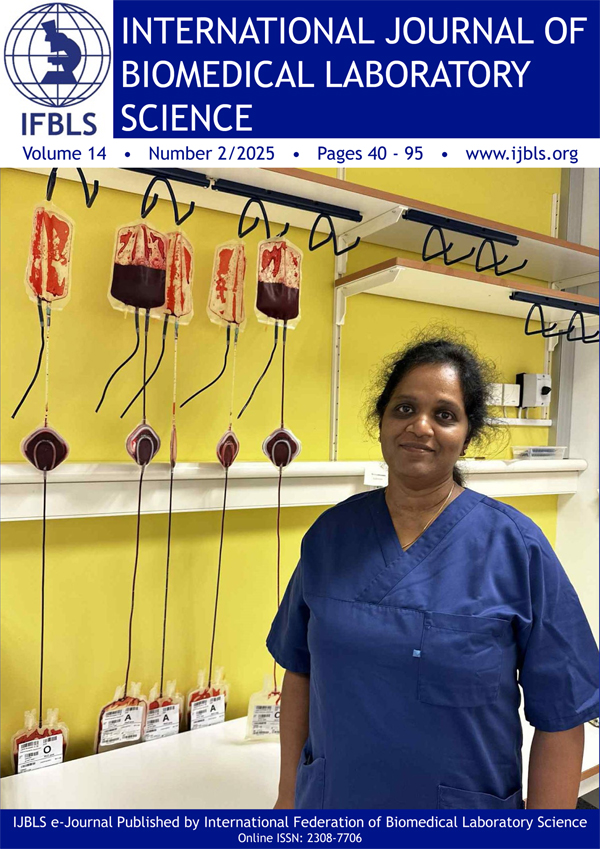Int. J. Bio. Lab. Sci 2012 1:50-58 【Abstract】 【PDF】
Abstract
Aim: To assess the accuracy of RHD and RHCE genotyping by real-time PCR, through the analysis of fetal DNA in plasma samples of Rh negative pregnant women.
Methods: The study consisted in the collection of two tubes of blood (each with 3 ml) from 19 RhD negative pregnant women that attended the obstetric consultation at the District Hospital of Figueira da Foz, E.P.E. One of the samples was used to perform blood typing and the other was used for fetal DNA extraction. The Rh genotype was determined by real-time PCR with specific primers and Taqman® probes for RHD, RHC, RHE, SRY and GLO genes.
Results: In 88.2% of cases (15/17) the RHD genotype was concordant with the phenotyping data, with 1 false-positive result (5.9%) and a precision of 94% (pvalue=0.001; K=76.7%). For the RHC gene, there was concordance in 60% of cases (6/10), with 4 false-negative results (40%) and a precision of 60% (pvalue=0,175; K=31%). Relatively to the RHE gene, the concordance achieved was
100% (10/10), with a precision of also 100% (pvalue=0.002; K=100%).
Conclusion: The present study confirms the precision of fetal RHD and RHE genotyping in maternal plasma. Performing a similar study with a superior number of samples could allow the implementation of this non-invasive prenatal diagnostic test in laboratorial and clinical routine, in order to follow pregnancies at risk for developing Hemolytic Disease of the Fetus and Newborn.
Key words: Fetal DNA, maternal plasma, Hemolytic Disease of the Fetus and Newborn, Anti-D prophylaxis, non-invasive prenatal diagnosis



